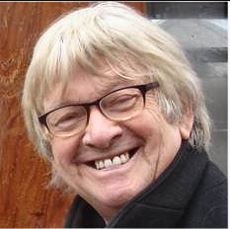It’s my first visit to Belgrade (or Beograd in Serbian – the White City) – I’m here for the European Federation of Journalists annual meeting this week. So what are my first impressions?
The journey by car from the airport to the hotel (a lift was kindly supplied by the JAS (Journalists Association of Serbia – one of three journalists unions in the country) was educational. First a drive through ‘New’ Belgrade, mainly built after the Second World War during the days of Tito and Yugoslavia. In the sunshine it did not look too bad, but in the dark winters days some parts must look dreary with their stereotypical eastern-block greyness. Driving into the old town (city) dating back to Celtic and Roman times, you get a great view of the Belgrade Fortress high above the city and overlooking the Sava and Danube rivers which meet here. Further into the old town I still saw evidence off the Nato bombing of the city in 1999 (most of it has long been rebuilt). It was mainly media, government and military buildings that Nato targeted and those that have not yet been rebuilt, some surrounded by hoardings, are a stark reminder of those dreadful days. I expect those attending a Nato conference here this week did not include a visit to these sites – although I could be wrong!
Fast-forwarding to the present day, I was reminded by my JAS colleague that like everywhere else, Serbia has a crisis in its media, except much worse in one respect – the crisis affecting the public service broadcaster, the Serbian Broadcasting Corporation (RTS). Founded in 1924, it was a successful broadcaster in recent times, but in the last few years it has faced a serious funding crisis. There has been a constant decline in the amount of money collected via the licence fee (in Croatia collection reaches over 90% – in Serbia barely 50%). Currently the licence fee and advertising income combined only raises 70% of the necessary finances to run the corporation. The broadcaster has also lost considerable advertising revenue to commercial TV stations, lobby groups and corrupt parts of the political elite, according to reports. It is also reported that there is considerable political interference and a poor working relationship with the regulatory body, the Republic Regulatory Agency. With some 3800 employees, (over breakfast I was told that in the past five years 30% of jobs have gone and ‘savings’ of some 45% achieved) they and the corporation face a grim future unless a new financial model can be agreed. No doubt we will be hearing more about this in the next few days when we meet RTS journalists .
A full report of the EFJ annual general meeting which took place from 15-17 June may be found on the EFJ web site at: http://europe.ifj.org/en
